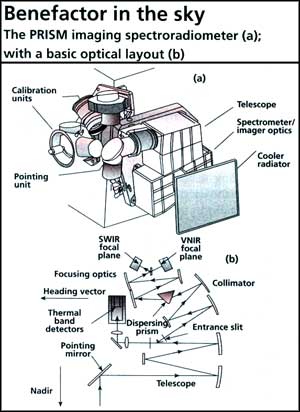Satellite and the changing natural world
 the satellite industry has come a long way from the first commercial launch of intelsat (also known as the Early Bird) on April 6, 1965. Research and development work in a large number of fields is relying heavily on the data being sent from various satellites orbiting the earth. The growing threat of a drastic ecological imbalance of the earth is making it imperative to design extremely powerful and discriminating observation satellites to monitor our endangered environment.
the satellite industry has come a long way from the first commercial launch of intelsat (also known as the Early Bird) on April 6, 1965. Research and development work in a large number of fields is relying heavily on the data being sent from various satellites orbiting the earth. The growing threat of a drastic ecological imbalance of the earth is making it imperative to design extremely powerful and discriminating observation satellites to monitor our endangered environment.
Sira, the electro-optical specialist company near London, is designing an ultra-sensitive instrument, a spectroradiometer for a 21st century European satellite that would enable scientists to monitor significant occurrences such as global warming, ozone depletion, pollution levels throughout the biosphere, health of crops, spread or retreat of deserts and the changing patterns of the world's weather.
The project is called Process Research by an Imaging Space Mission (prism) and several aerospace consortia have made competitive bids. Sira's partners on the instrumentation package design are Dornier Satellite Systems, Matra-Marcone Space and aea Technology
Related Content
- Atmospheric observations show accurate reporting and little growth in India’s methane emissions
- India State of the Environment Report : The Monthly Overview, September 2013
- Summer Arctic Sea Ice Melt At Or Near Record
- World disasters report 2009: focus on early warning, early action
- Human hand decisive for oceans
- Grand plans
